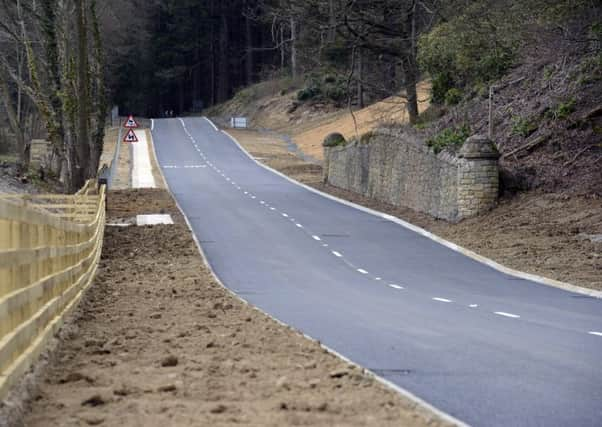Northumberland landslip in running for national engineering prize


As part of the Institution of Civil Engineers’ (ICE) Robert Stephenson Awards, voting opens online today for the ICE People’s Choice Award, allowing everyone that uses infrastructure to choose the UK’s greatest civil engineering achievements of the year.
The Crag End Landslip Stabilisation project, which repaired and future-proofed a stretch of the B6344, is one of 12 nominated projects from across the UK and the public has until Wednesday, November 30, to decide its favourite. The winning infrastructure project will be announced in January 2017.
Advertisement
Hide AdAdvertisement
Hide AdThe £9.5million project involved the reconstruction of a 300-metre section of road which was closed by a massive landslip on Boxing Day 2012. It not only dealt with the direct impact of the 2012 landslip, but also addressed the underlying causes of ground instability, ensuring the residents of Rothbury will no longer have to take lengthy detours to get to the town.
To achieve this, civil engineers from the VBA Joint Venture, who were commissioned by Northumberland County Council, designed and constructed an anchored, bored, piled retaining wall to support the road and an innovative passive de-watering system to reduce pressure from groundwater.
Will Davies, site agent at VolkerStevin, said: “Most of the clever engineering is invisible to people driving along the new road. Slopes are held in place by retaining walls and 30-metre-long rock anchors.
“In the early stages of the project, CCTV cameras were lowered into boreholes, to help engineers understand what was happening below ground. The footage was used to help create 3D models which provided the basis of the design.
Advertisement
Hide AdAdvertisement
Hide Ad“The team managed the high underground, artesian water pressure by building four-metre-high pipes above the ground. This enabled them to balance the water pressure and prevent spills into the nearby River Coquet.”
People can vote at www.ice.org.uk/PeoplesChoice